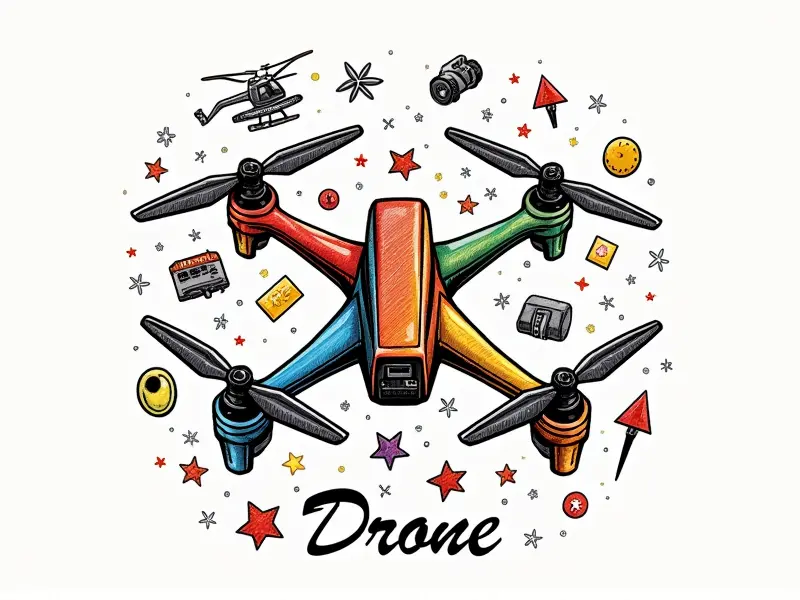Open-source autopilot options?

Open-Source Autopilot Options for RC Planes and Drones
If you're an enthusiast of remote-controlled (RC) aircraft or FPV racing drones, the world of open-source autopilots can be a treasure trove of innovation and customization. These systems offer unparalleled flexibility and cost-effectiveness compared to proprietary solutions.
Best Free Autopilot Systems for RC Planes
When it comes to flying model airplanes, choosing the right autopilot system is crucial for achieving optimal performance and reliability. Here are some of the best free options available:
- ArduPilot: Known for its robustness and versatility, ArduPilot supports a wide range of RC aircraft, including fixed-wing planes, multirotors, and helicopters.
- PX4: This system is highly customizable and offers advanced features like terrain-following and precision landing. It's ideal for both hobbyists and professional users.
Popular Open-Source Autopilots for FPV Racing Drones
The fast-paced world of FPV racing drones demands high-performance autopilot systems that can handle the rigors of competitive flying. Here are some top choices:
- CopterExpress: Designed specifically for FPV racing, this system offers real-time telemetry and advanced flight modes.
- Pixhawk: A modular autopilot platform that supports various sensors and actuators, making it highly adaptable to different drone configurations.
Leading Open-Source Flight Controllers for RC
The heart of any RC aircraft's automation lies in its flight controller. Here are some leading options:
- KISS FC: Known for its reliability and ease of use, KISS FC is a popular choice among hobbyists.
- Naze32: This compact and lightweight controller supports a wide range of flight modes and sensor configurations.
Compare Top Open-Source Autopilots for RC
Choosing the right autopilot system can be daunting, especially with so many options available. Here’s a quick comparison:
| Feature | ArduPilot | PX4 | CopterExpress | Pixhawk |
|---|---|---|---|---|
| Compatibility | Wide range of aircraft types | Multicopters, fixed-wing planes | Focused on FPV racing drones | Modular and adaptable |
| Customization | Highly customizable | Extremely flexible | Moderate customization options | Very high flexibility |
| Support and Community | Large, active community | Growing but strong support | Limited but growing | Strong community presence |
Essential Guide to Open-Source Drone Autopilots
To get the most out of your RC drone or plane, it’s essential to understand how open-source autopilots work and what they can do for you:
- Understanding the Basics: Learn about flight modes, sensor integration, and software configuration.
- Setting Up Your System: Follow step-by-step guides to install and configure your autopilot hardware and software.
- Tuning for Performance: Optimize your system’s performance by fine-tuning parameters like PID settings and sensor calibration.
Innovating with Open-Source Autopilot Systems
The beauty of open-source autopilots lies in their potential for innovation. Here are some ways you can push the boundaries:
- Custom Firmware Development: Modify existing firmware to add new features or improve performance.
- Sensor Integration: Integrate advanced sensors like LiDAR, GPS, and IMUs for enhanced flight capabilities.
- Mission Planning Software: Develop custom mission planning tools tailored to your specific needs.
DIY RC Drone with Open-Source Autopilot
Built from scratch using open-source components, a DIY RC drone can be both cost-effective and highly customizable. Here’s how you can get started:
- Select Components: Choose the right flight controller, ESCs, motors, props, and frame.
- Calibrate Sensors: Ensure accurate sensor readings by calibrating your gyroscope, accelerometer, and other sensors.
Install Firmware: Load the appropriate firmware onto your flight controller and configure it according to your needs.
Advantages of Open-Source Autopilot Systems
The benefits of using open-source autopilots are numerous. Here’s a look at some key advantages:
- Cost-effectiveness: Lower hardware and software costs compared to proprietary systems.
- Customizability: Ability to modify and extend the system according to your specific requirements.
- Community Support: Access to a large community of users who can offer advice, share resources, and help troubleshoot issues.
Beginner's Guide to Open-Source Autopilots
If you’re new to the world of open-source autopilots, here’s what you need to know:
- Getting Started: Familiarize yourself with basic concepts like flight modes and sensor integration.
- Troubleshooting Tips: Learn common issues and how to resolve them quickly.
- Resources for Learning: Explore online forums, documentation, and tutorials to deepen your understanding.
Must-Know Open-Source Autopilot Solutions
To make an informed decision, it’s important to know about the most popular open-source autopilots available today:
- ArduPilot: A versatile and robust system suitable for a wide range of aircraft types.
- PX4: Known for its flexibility, PX4 is ideal for advanced users looking to push the boundaries of what’s possible.
- CopterExpress: Focused on FPV racing drones, CopterExpress offers a streamlined and optimized solution.
Mission Planning with Open-Source Autopilots
To fully leverage the capabilities of your open-source autopilot system, mission planning is crucial. Here’s how you can get started:
- Define Your Mission: Outline specific objectives and tasks for your drone.
- Select Appropriate Tools: Choose from a range of mission planning software options available.
- Execute and Monitor: Plan, execute, and monitor your missions to ensure optimal performance.
Conclusion
Open-source autopilots offer unparalleled flexibility, cost-effectiveness, and community support. Whether you’re a hobbyist or a professional, there’s much to gain from embracing these innovative systems. Start exploring today and unlock the full potential of your RC drone or plane!

